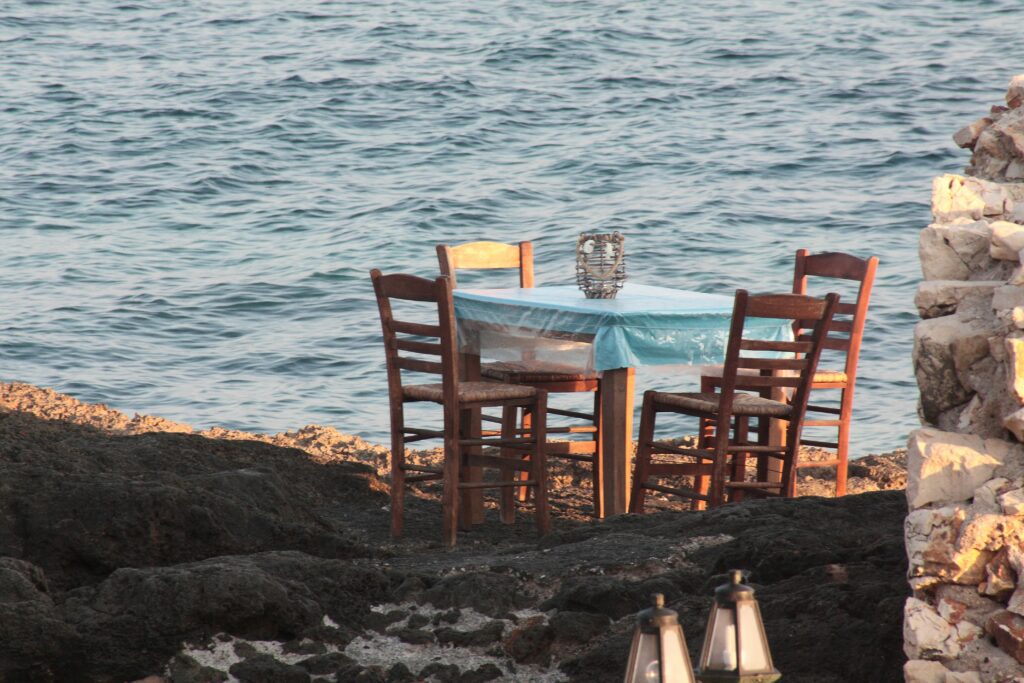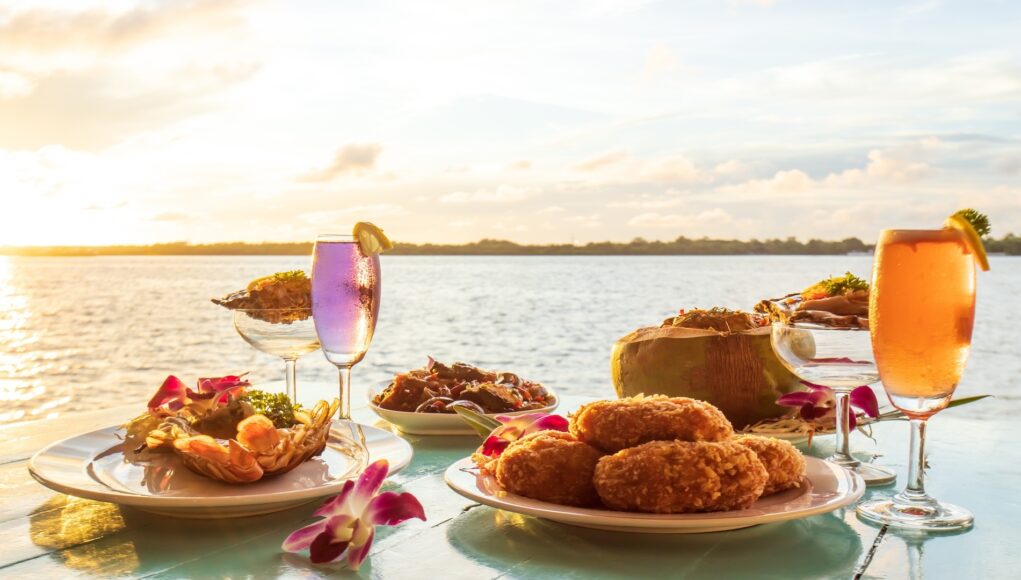Seaside towns are often synonymous with fresh seafood and coastal cuisine, offering a delightful array of culinary experiences that can tantalize the taste buds.
From bustling fish markets to quaint waterfront restaurants, the charm of these coastal culinary hotspots lies not only in their dishes but also in the vibrant atmosphere that surrounds them. Whether it’s the salty breeze or the sound of waves crashing against the shore, every bite of seafood tells a story of the ocean. This blog post dives into the best seafood delicacies found in various seaside towns, highlighting where to find them, what to expect, and how to make the most of your coastal culinary adventure.

1. The Charm of New England Clam Shacks
New England is famous for its clam shacks, where visitors can indulge in the freshest clams, lobster rolls, and chowders. Places like the iconic Woodman’s of Essex in Massachusetts serve up fried clams that are crispy on the outside and tender on the inside. Expect to pay around $20 for a generous serving of fried clams, paired with a side of tartar sauce and a lemon wedge. The rustic setting, complete with picnic tables and ocean views, adds to the experience.
Another must-visit is Legal Sea Foods, known for its award-winning clam chowder. A bowl costs about $10 and is packed with flavor, making it a perfect starter before diving into a classic lobster roll for around $25. The combination of fresh ingredients and local recipes makes New England a seafood lover’s paradise.
2. Southern Comfort: Shrimp and Grits in Charleston
Charleston, South Carolina, is a culinary gem known for its Lowcountry cuisine. One dish that stands out is shrimp and grits, a hearty meal that combines succulent shrimp with creamy, buttery grits. Hominy Grill is a local favorite where this dish is served with a twist, featuring a rich sauce and fresh herbs. Expect to pay around $18 for a satisfying portion.
For a more upscale experience, FIG offers a gourmet version that highlights seasonal ingredients, priced at approximately $30. The restaurant’s commitment to local sourcing means diners can enjoy the freshest flavors while soaking in the charming ambiance of historic Charleston.

3. The Pacific Northwest: A Haven for Oysters
The Pacific Northwest is renowned for its oysters, with towns like Olympia and Seattle leading the charge. The region’s unique coastal waters produce some of the best oysters in the world, and visitors can enjoy them raw, grilled, or fried. Hama Hama Oyster Company offers a unique experience where diners can shuck their own oysters right by the water. A dozen oysters typically costs around $15, making it an affordable and interactive dining experience.
For those who prefer a more refined setting, The Walrus and the Carpenter in Ballard serves up a variety of oysters with a rotating selection from local farms. Prices vary, but expect to pay around $3 to $4 per oyster. Pair them with a glass of local wine for a perfect afternoon treat.
4. The Caribbean Influence: Fish Tacos in Key West
Key West, Florida, is famous for its vibrant atmosphere and delicious fish tacos. The local cuisine is heavily influenced by Caribbean flavors, making it a must-visit for taco lovers. El Siboney is a local favorite, serving up fish tacos that are fresh, flavorful, and generously portioned for about $12. The combination of grilled fish, fresh salsa, and zesty lime creates a mouthwatering experience.
For a more casual vibe, Garbo’s Grill offers a food truck experience with fish tacos that are both affordable and delicious. Priced around $10, these tacos are perfect for a quick lunch while exploring the island. Don’t forget to try their homemade sauces for an extra kick!
5. The Mediterranean Touch: Paella in San Diego
San Diego’s coastal cuisine is heavily influenced by its proximity to Mexico and the Mediterranean. One dish that stands out is paella, a Spanish rice dish typically made with seafood, chicken, and a variety of spices. Casa Guadalajara offers a delightful seafood paella for around $25, featuring shrimp, mussels, and clams cooked to perfection.
For a more casual experience, La Jolla Fish Market provides a fresh take on paella with a beachside view. Their version is priced at approximately $20 and is perfect for sharing. The vibrant colors and flavors of this dish make it a feast for both the eyes and the palate.
6. The Hidden Gems: Local Fish Markets
Visiting local fish markets is a great way to experience the freshest seafood while also supporting local fishermen. Markets like Fisherman’s Wharf in Monterey, California, offer a variety of fresh catches, from salmon to crab. Prices vary, but a pound of fresh Dungeness crab can cost around $15, making it a great option for a DIY seafood feast.
In addition to purchasing seafood, many markets also have small eateries where visitors can enjoy freshly prepared dishes. For example, Monterey Fish Market serves up fish tacos and clam chowder, allowing visitors to taste the local flavors while shopping for dinner.
7. Sustainable Seafood Practices
As the demand for seafood grows, so does the importance of sustainable practices. Many seaside towns are now focusing on sustainable fishing methods to protect marine life and ensure future generations can enjoy seafood. Restaurants like The Fish Market in San Diego prioritize sourcing seafood from sustainable fisheries, providing diners with peace of mind while enjoying their meals.
Travelers are encouraged to look for certifications such as the Marine Stewardship Council (MSC) label when dining out. This not only supports responsible fishing practices but also helps to maintain the health of ocean ecosystems. Engaging with local fisheries and understanding their practices can enhance the overall dining experience and contribute to the preservation of coastal resources.
Conclusion
Exploring the seafood delicacies of seaside towns is an adventure that combines culinary delights with breathtaking coastal views. From clam shacks in New England to fish tacos in Key West, each destination offers unique flavors and experiences that reflect the local culture and environment. By seeking out fresh, sustainable seafood and supporting local businesses, travelers can indulge in the best coastal cuisine while contributing to the preservation of these beautiful seaside communities. So pack your bags, bring your appetite, and get ready to dive into the world of coastal eats!
Frequently Asked Questions
What’s the best time of year to visit seaside towns for seafood?
The best time to visit seaside towns for seafood varies by location. Generally, late spring to early fall (May to September) is ideal, as many seafood festivals occur during this time. However, specific seafood availability can depend on local fishing seasons, so checking with local fisheries or restaurants can provide the most accurate information.
How much should I budget for seafood meals?
Budgeting for seafood meals can vary widely depending on the location and dining style. On average, expect to spend between $15 to $30 per meal at casual seafood restaurants. Upscale dining can range from $30 to $60 or more per person. Additionally, consider budgeting for drinks and appetizers, which can add another $10 to $20 to your total meal cost.
What should I pack for a trip to seaside towns?
When visiting seaside towns, packing essentials include comfortable clothing suitable for warm weather, a light jacket for cooler evenings, sunscreen, and a hat for sun protection. If planning to dine at upscale restaurants, consider packing a nicer outfit. Additionally, bringing a reusable water bottle and a camera for capturing the stunning coastal views is recommended.
Are there any safety concerns when eating seafood?
While seafood is generally safe to eat, travelers should be cautious about where they dine. Ensure that restaurants follow proper food safety practices, such as maintaining cleanliness and proper food storage. If consuming raw seafood, such as oysters, be aware of any local advisories regarding water quality and shellfish safety.
What transportation options are available in seaside towns?
Transportation options in seaside towns often include rental cars, bicycles, and public transportation. Many towns are walkable, making it easy to explore local attractions and eateries. Consider using rideshare services for convenience, especially if planning to enjoy local drinks. Researching public transport options can also help navigate larger towns.
What local customs should I be aware of?
Local customs can vary by region, but generally, it’s polite to greet locals and thank restaurant staff. Tipping is customary in the U.S., typically around 15-20% of the bill. Additionally, some seaside towns may have specific seafood festivals or events, so checking local calendars can enhance your travel experience.
Any insider tips for enjoying seafood in seaside towns?
To truly enjoy seafood in seaside towns, consider visiting local fish markets for the freshest options. Engaging with local fishermen or chefs can provide insights into the best dishes and seasonal specialties. Additionally, trying dishes that feature local ingredients can enhance the culinary experience. Lastly, don’t hesitate to ask locals for their favorite spots; they often know hidden gems that tourists might miss!


















